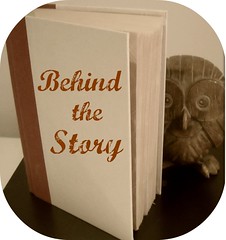This week's topic:
Emotion
What I do enjoy: conflict, action, suspense, plots with twists and turns. Give me a quest. Give me a battle between good and evil. Give me dire stakes to save the one you love. That’s my kind of story. And therefore, that’s what I tend to write. I’m a conflict and plot driven writer. I plan out my books by the obstacles and challenges I intend for my characters to face. And I love writing this way. It’s great.
However, the wisdom of one of my professors pointed out that a novel can’t be just action. A novel has an action plot and an emotional plot. Typically, in my first draft, I have the action plot down. It’s my emotional plot that needs some help.
At first, this whole realization of an emotional plot kind of blew my mind. I didn’t really know what to do about it. It makes sense when you look at my reading preferences. Was I a total failure at this emotional stuff? But then I looked at the first drafts of my stories, and I realized that I’d left myself clues as to the emotional plot. Like breadcrumbs I didn’t know I’d trailed behind me as I was munching my way through the forest.
My first step to remedying my weak emotional plot, was to gather the clues I left myself and piece together the emotional journey my character goes on over the course of the story.
I find it helpful to identify both the action plot and the emotional journey. Sometimes it’s helpful to see how they fit together. And if you’re someone who is good at the emotional stuff, then it might help you to outline your action plot.
For example, here is the action plot and emotional plot of my novella “Rebel Angel”:
The action plot is composed of events or challenges in the physical world, whereas the emotional plot should be showing how the character grows and changes over the course of the story.
Exercise #1
Identify the action plot and emotional plot of your novel. I find the chart helpful, but you may use any format that works for you.
Return next week for more about emotional plots and more writing exercises!
Links to Previous 'Behind the Story' Posts:
Pacing and Description Part 1
Pacing and Description Part 2
Pacing and Description Part 3
Choosing Character Names


Love this! It's one of the most useful things when plotting, because if you know your characters emotional stakes, then when you throw action at them, you can make it doubly hard for them. Give them a chance to save the world, but make them sacrifice what they desire most in the world, etc, etc, etc. but I love issue books. :) Some more than others. I really need them to be more than just "this is an issue", i need them to have hope and be a lens into my own life. But I love escapist books, too!
ReplyDeleteThat's EXACTLY what I'm learning, that emotional stakes enhance the action. :)
DeleteGreat post! I feel like I'm taking a class with you, so I appreciate all the little tips. I want to start getting into the routine of writing more so it's great to have all these new ideas to keep in mind. :)
ReplyDeleteYay! I'm glad you're enjoying these posts! I love book blogging and have more followers from that, but I love discussing writing just as much!
DeleteYou might NOT like PUSHING THE LIMITS, then, because it has a lot of issues, so ignore that recommendation (so sad!). It's not that type of issues with Daisy Whitney, though, so still read her! Oh, I am in LOVE with Jodi Meadows, and I just saw that INCARNATE is on sale as an ebook for $2.99! It has sylph and dragons and romance and a world where nothing is as it seems. I was wary when I first started reading it because there's reincarnation, but it's NOTHING like anything I've read or expected b/c it's a world where EVERYONE is re-incarnated...until one soul never comes back and a new one slips into its place... And finding out all the WHYs when I finished book 2 last night made me shiiiiver!
ReplyDeleteI like the way you created a chart to define your emotion so you know what you want to add where! Good thought!